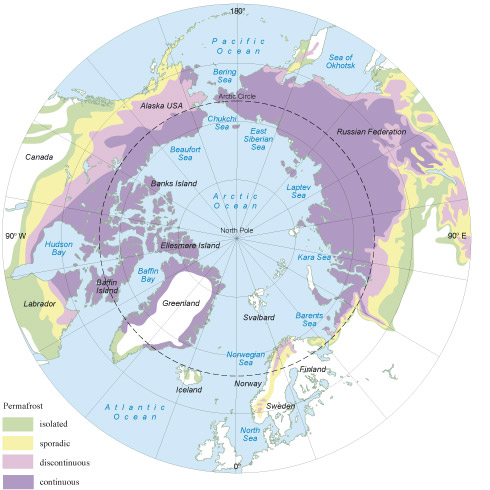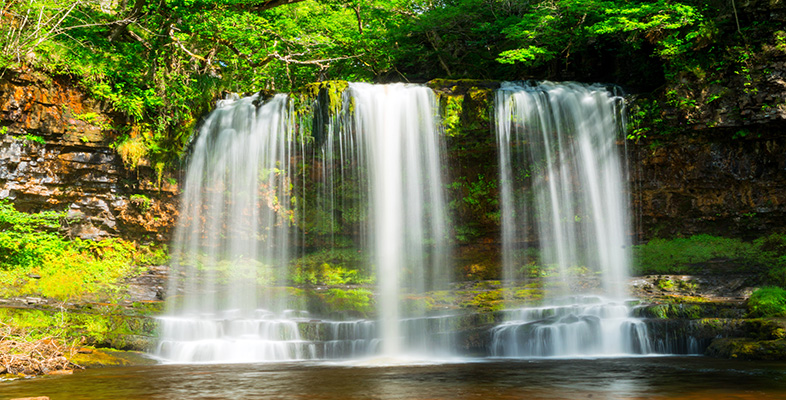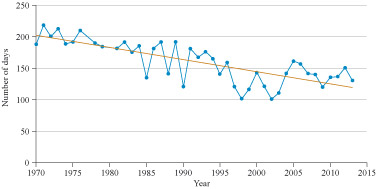5.3 Permafrost
Climate models suggest that, given the predictions of Arctic warming, the sea ice could disappear completely in summer by the middle of the 21st century. Given this and the changes you have observed in this course, you could not put the current situation any better than this:
With sharply rising atmospheric greenhouse gas concentrations, the change to a seasonally ice-free Arctic Ocean seems inevitable. The only question is how fast we get there. The emerging view is that if we’re still waiting for the rapid slide towards this ice-free state, we won’t be waiting much longer.
The extent of snow cover in the northern hemisphere is decreasing in a similar way in another positive feedback loop, but what about the frozen ground beneath the snow that is called permafrost? Most of the global permafrost is in the Arctic and high mountain areas (Figure 31), and many cities use the frozen ground as foundations for building – and even for temporary roads in winter.

It should be expected that the area of permafrost will decrease, but it is difficult to measure. Virtually all boreholes into the permafrost show that Arctic warming (Figure 26) is penetrating into the ground. While frozen, permafrost provides a solid surface – a vehicle will leave no trace. As the permafrost melts, the situation is different. The State of Alaska has strict rules for vehicle travel on permafrost to prevent environmental damage. When it is too warm, travel is not allowed. The duration of allowed permafrost travel set by the Alaska Department of Natural Resources is an interesting climate change proxy (Figure 32)!

